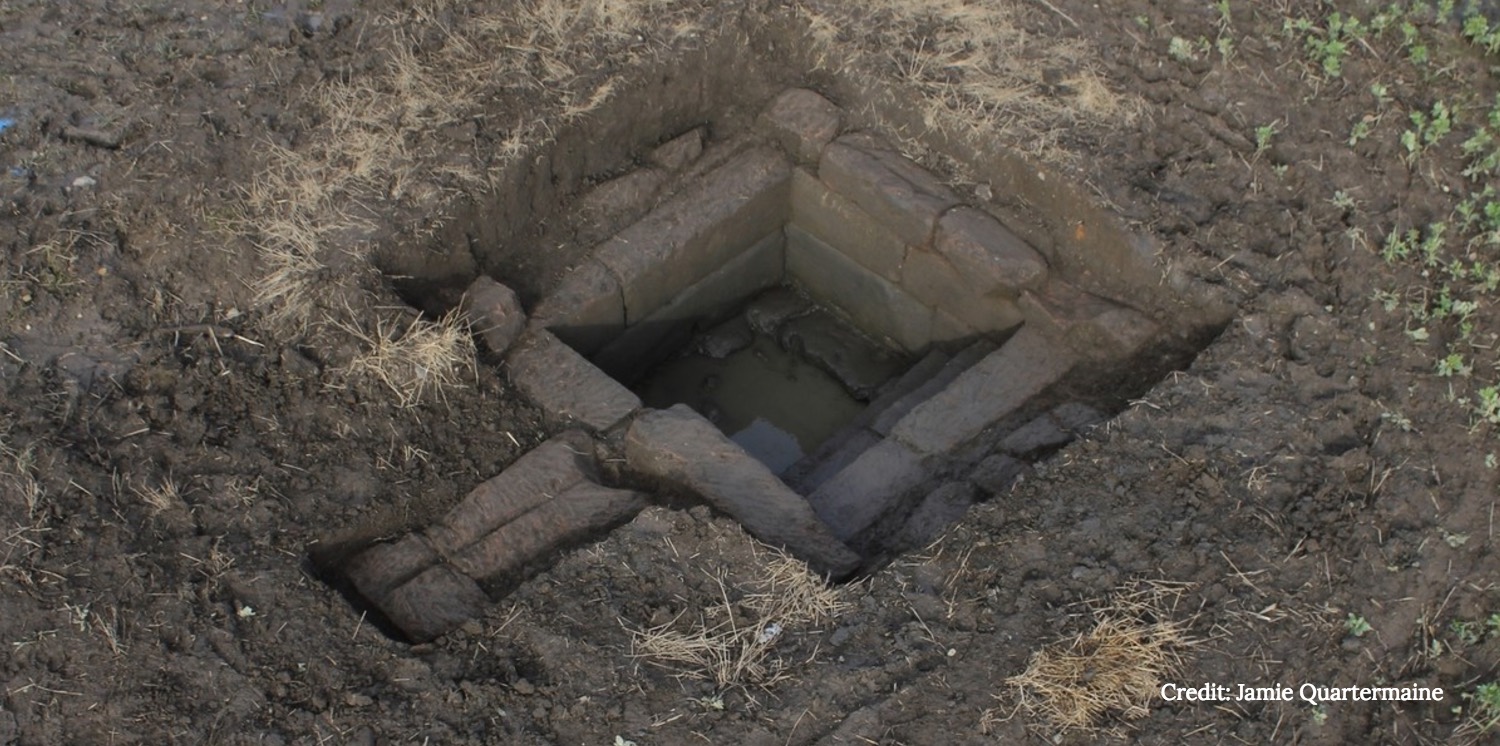'Cursed' Medieval Well Found in England

A Medieval well that was once believed to wash away sins, while healing eye and skin diseases has been recovered in England. Legend has it that the well was also cursed and records indicate a strange death occurred there.
St. Anne's Well was found on the lands of a private farm on the border between the townships of Rainhill and Sutton St Helens, near Liverpool, UK.
According to Historic England Heritage, which commissioned the excavation, "the well had become completely filled with earth due to ploughing."
"When we first got to the well we found that there was very little indication of it on the surface, but after excavation it was found to be in reasonable condition," Jamie Quartermaine, an archaeologist who supervised the dig, told Discovery News.
The well was built of local sandstone blocks and consisted of a shallow square basin with two steps leading down into the bottom.
"The fabric of the well is consistent with a Medieval date," Quartermaine said.
The archaeologist noted that St. Anne is quite commonly associated with holy wells.
Get the world’s most fascinating discoveries delivered straight to your inbox.
"This well was probably a late Medieval foundation as the cult of St. Anne did not become widespread in England until after the end of the 14th century," Quartermaine said.
RELATED: Dark Side of Medieval Convent Life Revealed
The dating is important. Alexandra Walsham, professor of modern history at Cambridge's Trinity College, told Seeker that "a Medieval past for many healing wells was assumed or even invented by later antiquaries, especially in the 19th century."
After descending the steps, pilgrims submerged themselves in the pool, which was about 4 feet deep. Water seeped in from below the floor, while a stone conduit, now lost, took water from the overflow of the well, which measures 6.5 feet by 6.5 feet.
According to Historic England Heritage, local legend suggests St. Anne's Well was associated with a nearby priory of about 12 monks, which was lost during Henry VIII's draconian dissolution of the monasteries.
The legend said the priory held an extensive estate from which the monks had an income. The story goes that St. Anne had bathed in the well, which was reputed to have healing powers for eye and skin afflictions.
"The well attracted numbers of pilgrims, necessitating the building of a small three-roomed structure around the well and the custodianship of two of the monks," Quartermaine said.
RELATED: 300-Year-Old 'Magic' Shoe Found in U.K. College Wall
According to local folklore, a dispute rose in the 16th century about boundaries and access to the well between the prior, Father Delwaney, and Hugh Darcy, the estate manager of the neighboring landowner.
One day, when the two stood nearby the well, Darcy predicted the prior would not be in position for much longer. Two days later the king's commissioners arrived and took possession of the priory and the well.
Father Delwaney promptly understood Darcy's role in the action as he was clearly known to the commissioners.
"With teeth tightly clenched, and his face white with suppressed passion," the prior hissed out his curse, according to a 1877 report on local legends in the St. Helens Leader.
Darcy would be dead within a year and a day, Delwaney predicted. He then collapsed and died himself.
A series of disgraces fell on Darcy: three months after the curse, his only son died of a mysterious illness. He suffered financial losses and "plunged recklessly into dissipation," according to the St. Helens Leader.
One night, after heavy drinking at a tavern, he disappeared.
"The search began. Nothing was seen until they came to the well, in which Darcy was found lying dead, his head crushed in," the St. Helens Leader reported.
Despite the grim legend, the well continued to be revered even after the dissolution, and people immersed themselves in the waters until the 19th century.
To protect the structure from damage by farm machinery, new wooden edging will be installed.
"We have worked with the farmers to ensure this important holy well survives long in to the future," Tamsin Cooke, a Historic England Heritage at Risk representative, said.
Original article on Seeker.


